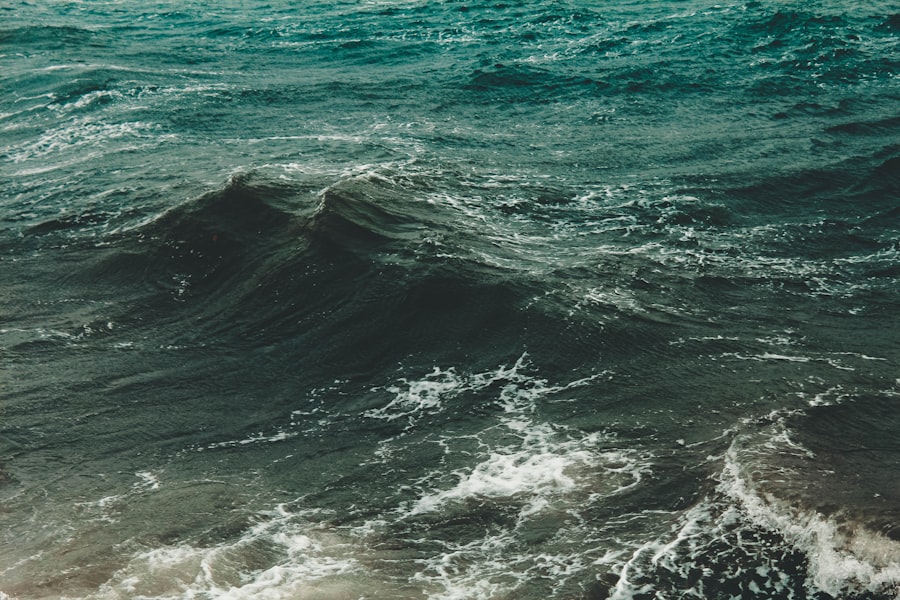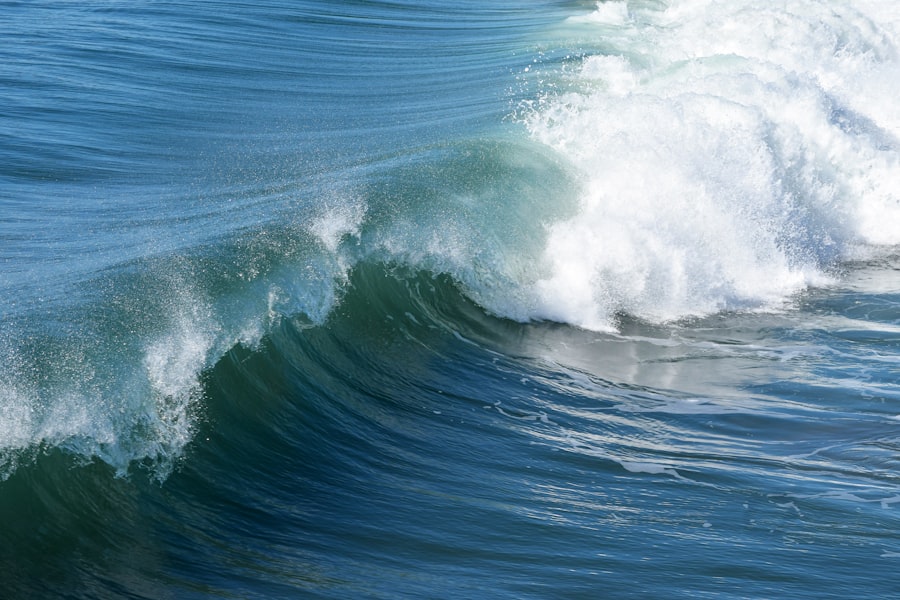The Drake Passage, a body of water situated between the southern tip of South America and Antarctica, is renowned for its tumultuous seas and unpredictable weather patterns. This narrow stretch of ocean, measuring approximately 800 kilometers (500 miles) wide, serves as a critical conduit for maritime traffic between the Atlantic and Pacific Oceans. Named after the English explorer Sir Francis Drake, who navigated these waters in the late 16th century, the passage has long been a focal point for sailors, scientists, and adventurers alike.
Its unique geographical position not only makes it a vital route for shipping but also a significant area for studying oceanographic phenomena. The passage is characterized by its deep waters and strong currents, which can create challenging conditions for vessels attempting to traverse it. The confluence of various oceanic and atmospheric forces results in a dynamic marine environment that is both fascinating and formidable.
Understanding the intricacies of the Drake Passage is essential for anyone looking to navigate its waters, as the interplay of currents, winds, and tides can dramatically affect a vessel’s journey. As such, the Drake Passage stands as a testament to the power of nature and the resilience of those who dare to traverse its depths.
Key Takeaways
- The Drake Passage is a narrow stretch of water between South America’s Cape Horn and the South Shetland Islands of Antarctica.
- Understanding ocean currents is crucial for predicting weather patterns, marine life distribution, and navigation in the Drake Passage.
- Ocean currents play a significant role in navigating the Drake Passage, affecting ship routes and travel times.
- The Antarctic Circumpolar Current is the strongest ocean current in the world and has a major impact on the Drake Passage.
- Wind has a significant influence on ocean currents in the Drake Passage, affecting their speed and direction.
The Importance of Understanding Ocean Currents
Ocean currents play a pivotal role in shaping marine ecosystems and influencing global climate patterns. They are driven by a combination of factors, including wind, temperature differences, salinity variations, and the Earth’s rotation. In the context of the Drake Passage, understanding these currents is crucial for several reasons.
First and foremost, they dictate the movement of water masses, which in turn affects marine life and nutrient distribution. The rich biodiversity found in these waters is largely a result of the complex interactions between currents and local ecosystems. Moreover, ocean currents are instrumental in regulating weather patterns and climate.
The Drake Passage is no exception; its currents contribute to the overall circulation of the Southern Ocean, which has far-reaching implications for global climate systems. By studying these currents, scientists can gain insights into climate change and its potential impacts on both marine and terrestrial environments. Thus, a comprehensive understanding of ocean currents is not only vital for navigation but also for broader ecological and climatological research.
The Role of Ocean Currents in Navigating the Drake Passage

Navigating the Drake Passage requires a keen awareness of the ocean currents that dominate its waters. These currents can significantly influence a vessel’s speed and direction, making it imperative for mariners to account for them when plotting their courses. The primary current in this region is the Antarctic Circumpolar Current (ACC), which flows from west to east around Antarctica.
This powerful current is responsible for much of the water movement in the Drake Passage and can create both advantageous and adverse conditions for ships. For instance, when vessels are able to harness the ACC’s flow, they can experience faster transit times and reduced fuel consumption. Conversely, if a ship encounters opposing currents, it may face delays and increased operational costs.
Therefore, understanding the timing and strength of these currents is essential for effective navigation. Mariners often rely on advanced forecasting tools and historical data to anticipate current patterns, allowing them to make informed decisions that enhance safety and efficiency during their voyages through this challenging passage.
The Antarctic Circumpolar Current
| Aspect | Details |
|---|---|
| Location | Southern Ocean surrounding Antarctica |
| Flow direction | Eastward |
| Width | 100 to 200 kilometers |
| Depth | Approximately 4,000 meters |
| Speed | Up to 1.5 meters per second |
The Antarctic Circumpolar Current is one of the most significant ocean currents on Earth, encircling Antarctica and connecting the Atlantic, Pacific, and Indian Oceans. This current plays a crucial role in regulating global climate by facilitating heat exchange between different ocean basins. In the Drake Passage, the ACC is particularly influential due to its strength and consistency.
It flows at an average speed of about 1 meter per second (2.2 miles per hour), but can reach speeds of up to 2 meters per second (4.5 miles per hour) in certain areas. The ACC not only affects navigation but also has profound implications for marine ecosystems. It transports nutrients from deeper waters to the surface, supporting a rich array of marine life, including krill, fish, and seabirds.
The Influence of Wind on Ocean Currents in the Drake Passage
Wind is a primary driver of ocean currents, exerting force on the surface of the water and creating movement that can propagate through deeper layers. In the Drake Passage, prevailing westerly winds play a significant role in shaping current patterns. These winds can enhance or disrupt existing currents, leading to variations in water temperature and salinity that impact marine life and navigation alike.
The interaction between wind and ocean currents can create complex scenarios for vessels traversing the passage. For example, strong winds can generate rough seas and increase wave heights, making navigation more challenging. Conversely, favorable winds can assist ships in maintaining their course and speed.
Mariners must remain vigilant in monitoring wind conditions and adjusting their strategies accordingly to ensure safe passage through this unpredictable region.
The Impact of Tides on Ocean Currents in the Drake Passage

Tides are another critical factor influencing ocean currents in the Drake Passage. The gravitational pull of the moon and sun causes periodic changes in sea level that can affect water movement in coastal areas and open oceans alike. In this region, tidal forces interact with existing currents to create complex flow patterns that can vary significantly throughout the day.
Understanding tidal influences is essential for navigators as they can lead to sudden changes in current strength and direction. For instance, during high tide, certain areas may experience stronger currents that could pose challenges for vessels attempting to navigate through narrow passages or around islands. Conversely, low tide may reveal underwater hazards that were previously submerged.
By accounting for tidal cycles in their navigation plans, mariners can enhance their safety and efficiency while traversing these treacherous waters.
Navigational Challenges in the Drake Passage
The Drake Passage presents numerous navigational challenges that require careful planning and execution. One of the most significant obstacles is its notorious weather conditions, which can change rapidly and without warning. Strong winds, heavy seas, and fog are common occurrences that can hinder visibility and complicate navigation efforts.
Mariners must be prepared to adapt their strategies based on real-time weather data to ensure safe passage. Additionally, the presence of icebergs poses another serious threat to navigation in this region. Icebergs calving from glaciers can drift into shipping lanes, creating hazards that require constant vigilance from crews.
The unpredictable nature of these ice formations necessitates advanced radar systems and ice detection technologies to help vessels avoid collisions. As such, navigating the Drake Passage demands not only skill but also a comprehensive understanding of environmental factors that can impact safety.
Strategies for Navigating the Drake Passage
To successfully navigate the Drake Passage, mariners employ various strategies that take into account the unique challenges presented by this region. One key approach involves meticulous route planning based on current forecasts, wind patterns, and tidal information. By analyzing historical data alongside real-time updates, navigators can identify optimal paths that minimize risks associated with adverse weather or strong currents.
Another important strategy is maintaining open communication with other vessels operating in the area. Sharing information about current conditions can enhance situational awareness and improve safety for all ships traversing the passage. Additionally, many modern vessels are equipped with advanced navigation systems that utilize satellite technology to provide accurate positioning data and real-time updates on environmental conditions.
These tools enable mariners to make informed decisions while navigating through one of the world’s most challenging maritime environments.
The Future of Navigating the Drake Passage
As technology continues to advance, the future of navigating the Drake Passage holds promise for improved safety and efficiency. Innovations in navigation systems are making it easier for mariners to access real-time data on ocean currents, weather patterns, and tidal influences. This information allows for more precise route planning and enhances situational awareness during voyages.
Moreover, ongoing research into oceanographic phenomena will contribute to a deeper understanding of how climate change may impact conditions in the Drake Passage over time. As sea temperatures rise and ice melt accelerates, shifts in current patterns could alter navigational challenges faced by vessels operating in this region. By staying informed about these developments and adapting strategies accordingly, mariners can continue to navigate this formidable passage with confidence.
Environmental Considerations in Navigating the Drake Passage
Navigating the Drake Passage also necessitates careful consideration of environmental impacts associated with maritime activities. The delicate ecosystems found within these waters are vulnerable to disturbances caused by shipping traffic, pollution, and climate change. As such, it is essential for mariners to adopt sustainable practices that minimize their ecological footprint while traversing this pristine region.
Efforts are underway to promote environmentally responsible navigation through initiatives aimed at reducing emissions from vessels operating in sensitive areas like the Drake Passage. Additionally, increased awareness about marine conservation efforts encourages mariners to be mindful of their impact on local wildlife and habitats. By prioritizing environmental stewardship alongside safe navigation practices, those who traverse these waters can help preserve the natural beauty and biodiversity that define this remarkable region.
Navigating the Drake Passage with Ocean Currents in Mind
In conclusion, navigating the Drake Passage requires a multifaceted understanding of ocean currents and their interplay with wind, tides, and environmental factors. As one of the most challenging maritime routes on Earth, it demands careful planning and adaptability from mariners who seek to traverse its waters safely. By harnessing knowledge about oceanographic phenomena such as the Antarctic Circumpolar Current and remaining vigilant about changing weather conditions, sailors can enhance their chances of successful passage.
Furthermore, as technology continues to evolve and environmental considerations gain prominence within maritime operations, there is hope for a future where navigating this formidable passage becomes safer and more sustainable. Ultimately, those who venture into the Drake Passage must remain attuned to nature’s rhythms while respecting its delicate ecosystems—ensuring that this remarkable stretch of ocean remains navigable for generations to come.
The Drake Passage is a crucial area for understanding ocean currents, as it serves as a natural bottleneck for the Antarctic Circumpolar Current, the world’s largest ocean current. This current plays a significant role in global climate regulation by facilitating the exchange of water between the Atlantic, Pacific, and Indian Oceans. For a deeper exploration of how ocean currents like those in the Drake Passage impact global climate patterns, you can read a related article on
